Game design
Board game: Hack a:Tack
Teens eagerly use new devices but overlook digital safety. Hack a:Tack is designed to promote responsible online behavior in teens in a fun way.
Teens eagerly use new devices but overlook digital safety. Hack a:Tack is designed to promote responsible online behavior in teens in a fun way.


Watching my siblings navigate their interactions made me realize that teens are often very excited about using new devices and are not concerned about digital safety. It is common for children to want to share personal information online as they seek high social currency. However, it is important to be aware of the potential risks and drawbacks of this behavior.
Games promote interactive learning, facilitating easy understanding of actions and repercussions. It offers different perspectives and encourages screen-off time, providing a valuable non-digital learning experience.
Watching my siblings navigate their interactions made me realize that teens are often very excited about using new devices and are not concerned about digital safety. It is common for children to want to share personal information online as they seek high social currency. However, it is important to be aware of the potential risks and drawbacks of this behavior.
Games promote interactive learning, facilitating easy understanding of actions and repercussions. It offers different perspectives and encourages screen-off time, providing a valuable non-digital learning experience.
My role
My role
User research, concept creation, game design, prototyping, branding
Team
Team
Individual project
Individual project
28%
28%
28%
Teens get exposed to innapropriate content while browsing
Where it began
Observing my siblings brag to their friends about the number of likes on their post on social media is what sparked the initial curiosity.
Primary researched uncovered that:
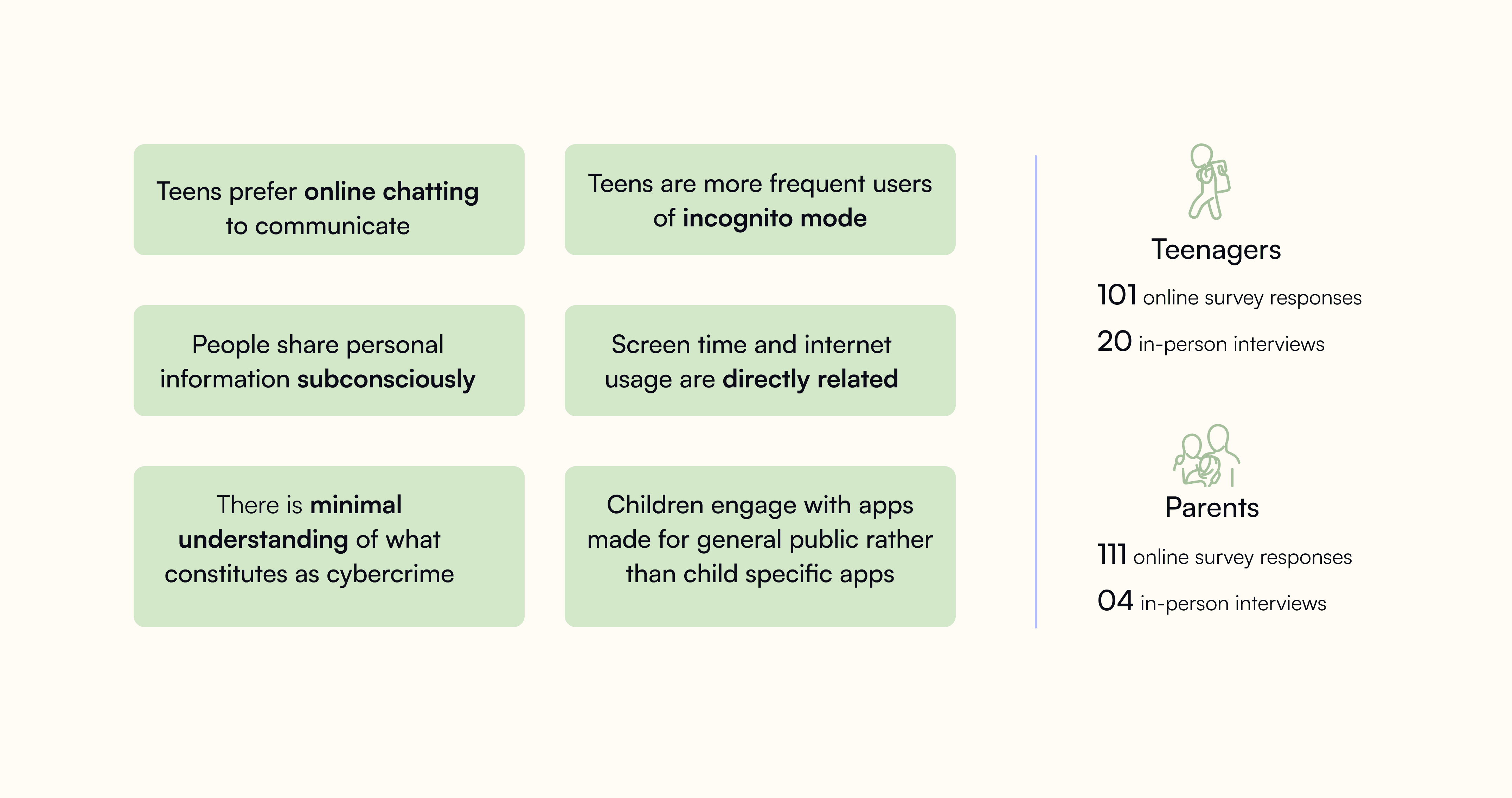



Problem statement
How might we make it fun and easy for teens to get familiarized with jargon used on the internet, in order to encourage more responsible online behavior
Leveraging intrinsic motivation using Octalysis Framework
Leveraging intrinsic motivation using Octalysis Framework
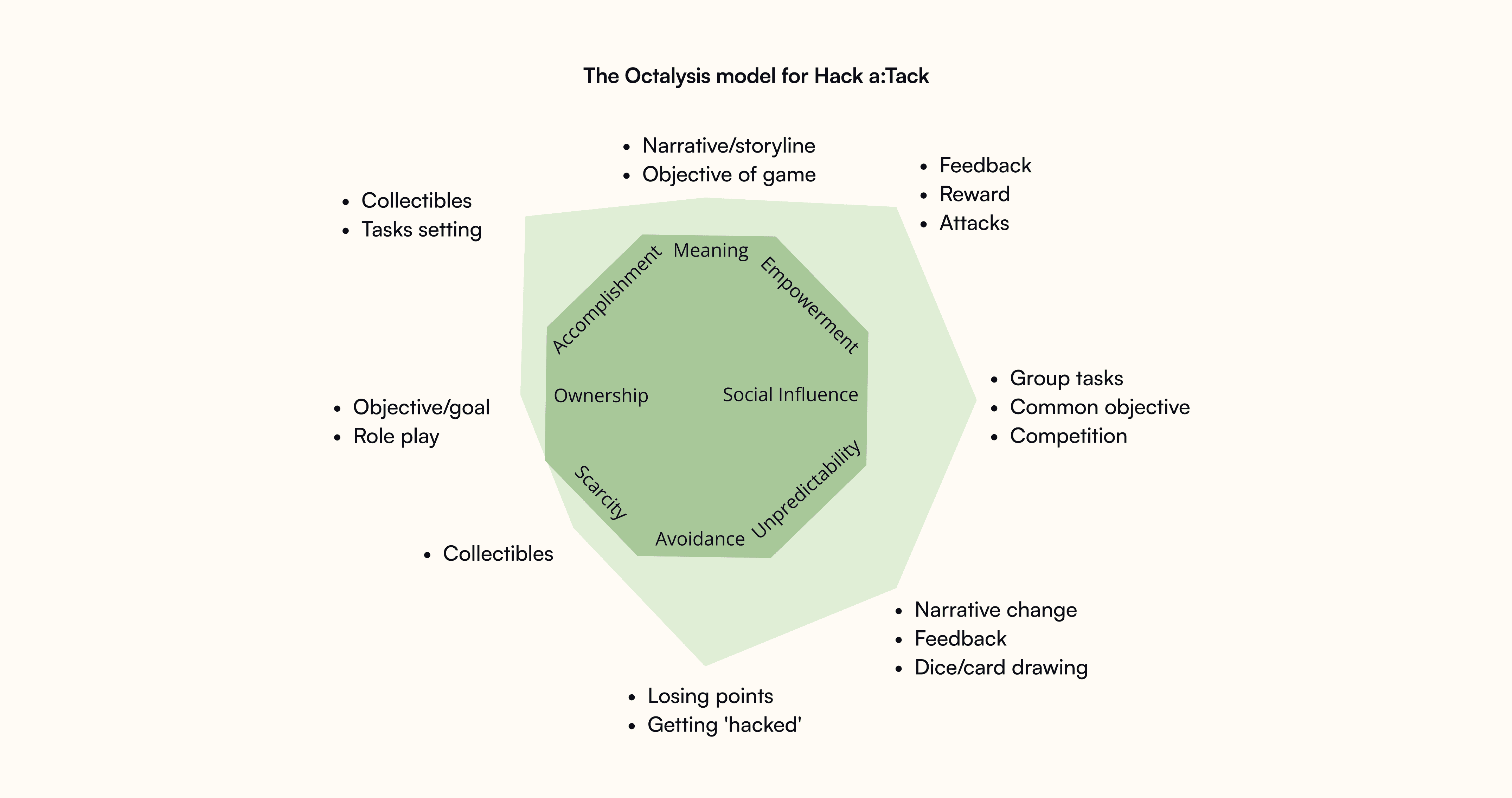


Mapping the experience of people while playing games
Mapping the experience of people while playing games
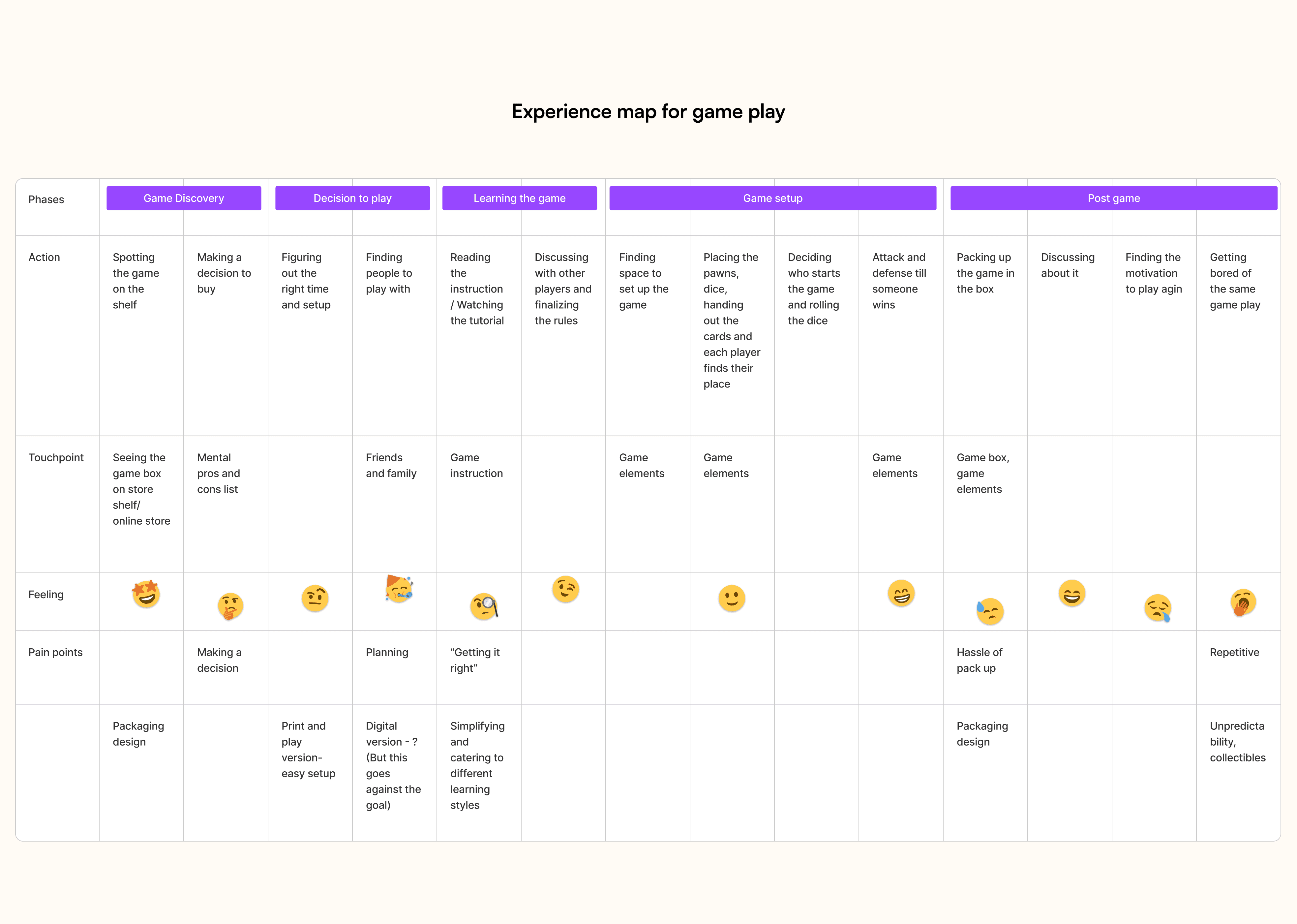


From sketches to a working prototype
From sketches to a working prototype
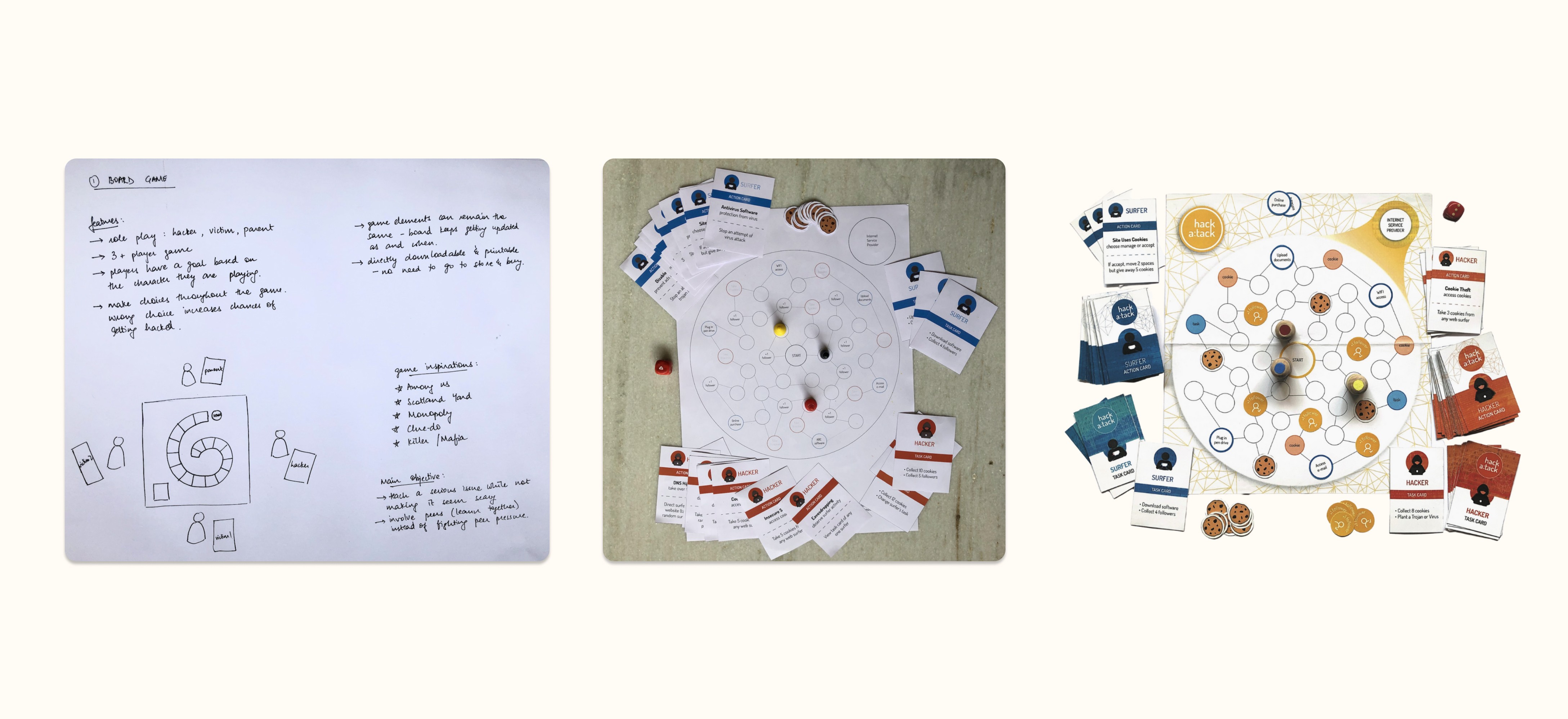


User testing
During casual play, a teen asked "what are cookies" when prompted on a website, showing interest sparked by playing the game.
During casual play, a teen asked "what are cookies" when prompted on a website, showing interest sparked by playing the game.
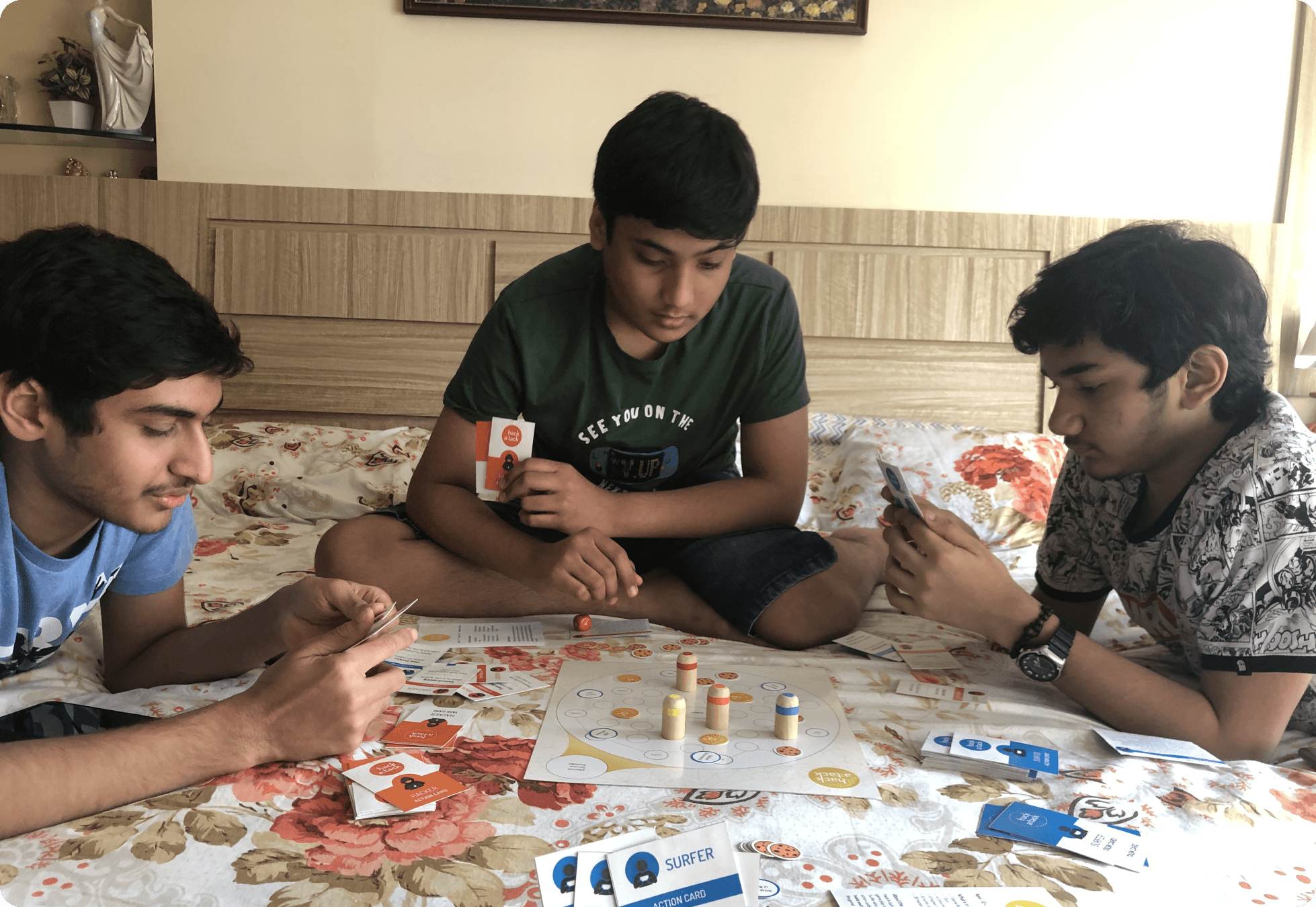


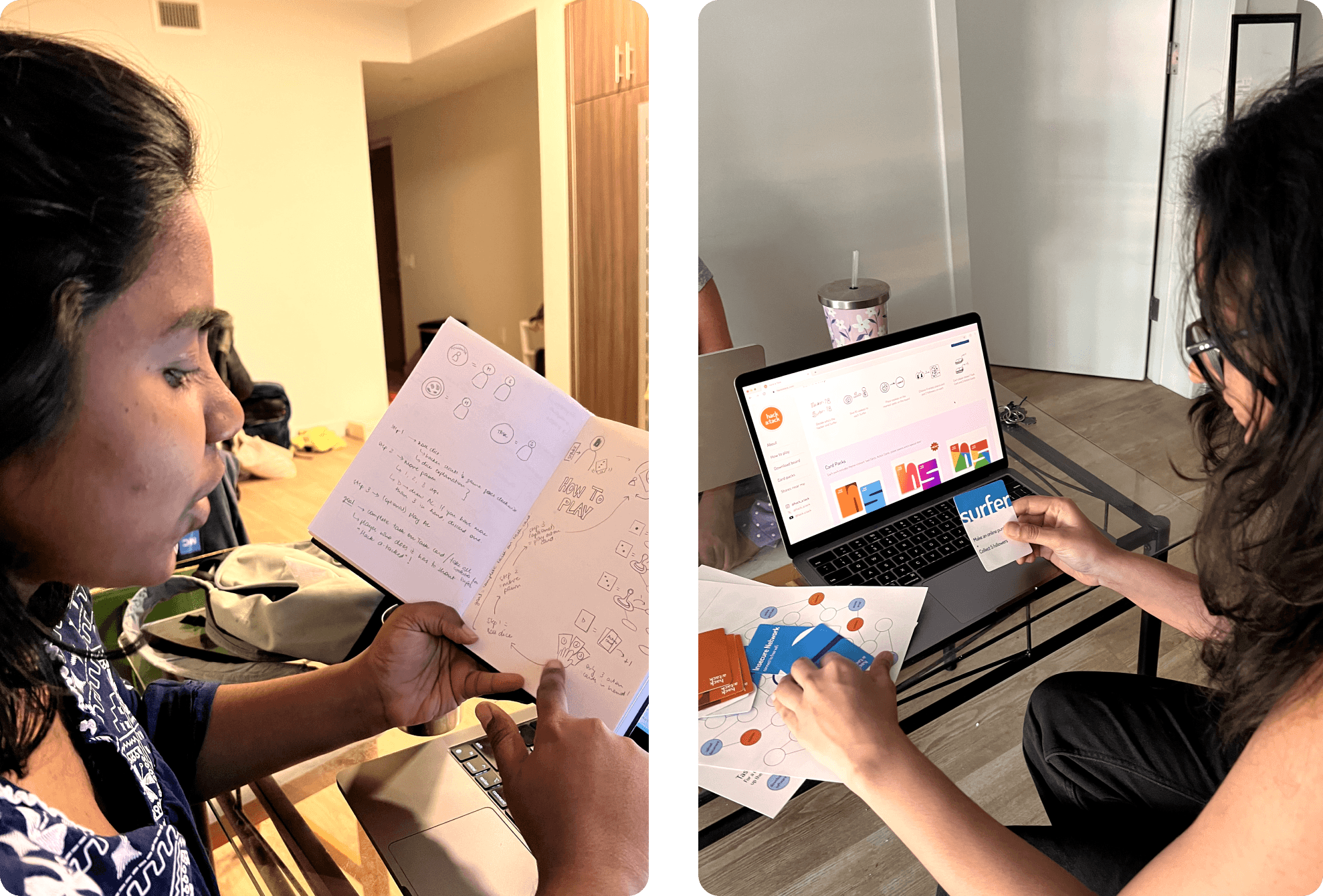


The solution
Board game with 60 Action Cards, 18 Task Cards, a unique dice, tokens and player pawns- user tested and ready for play!
Board game with 60 Action Cards, 18 Task Cards, a unique dice, tokens and player pawns- user tested and ready for play!




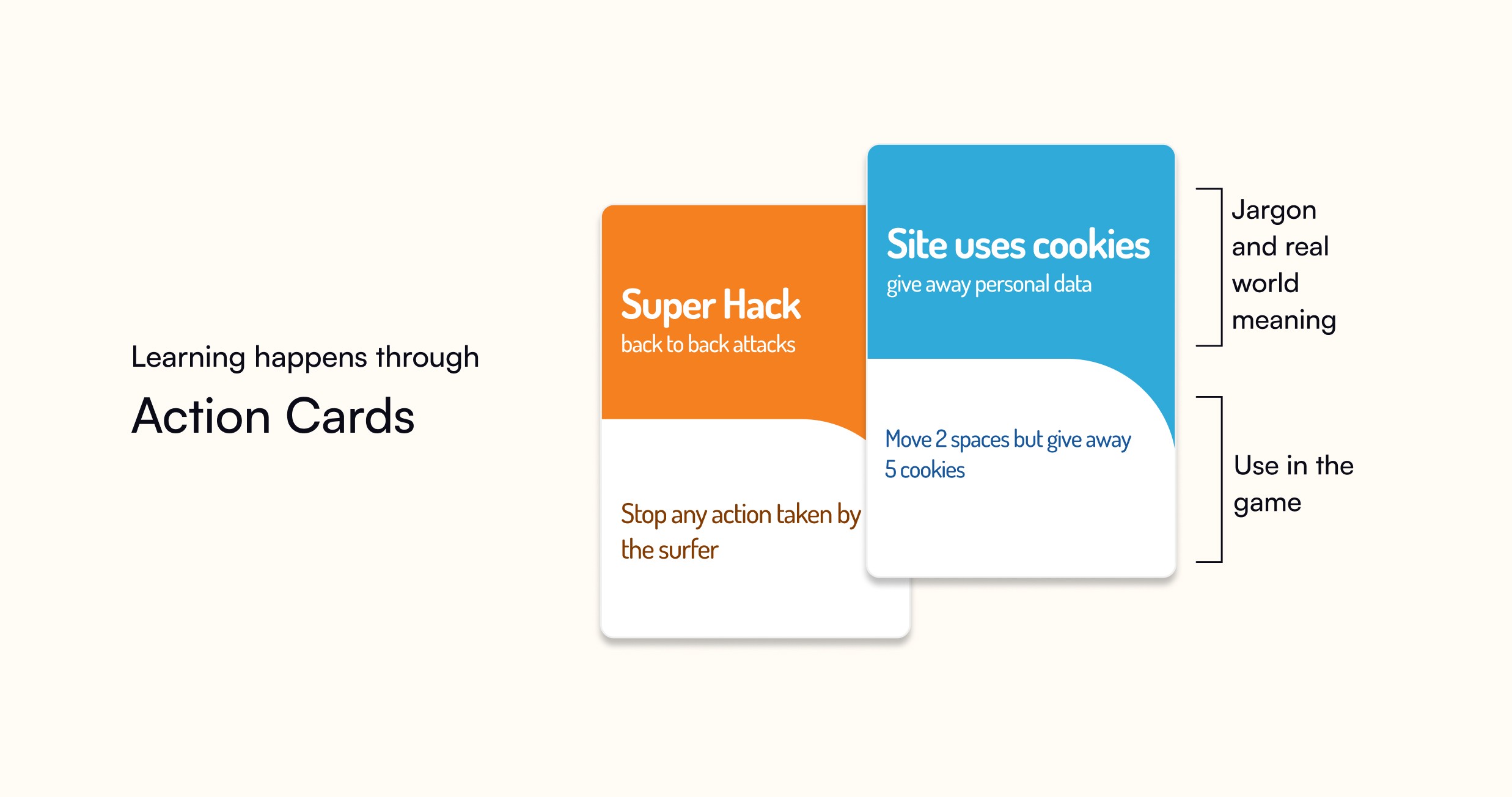







Future scope: Creating themed card sets which can be used to expand the game over the same board base.
Future scope: Creating themed card sets which can be used to expand the game over the same board base.



